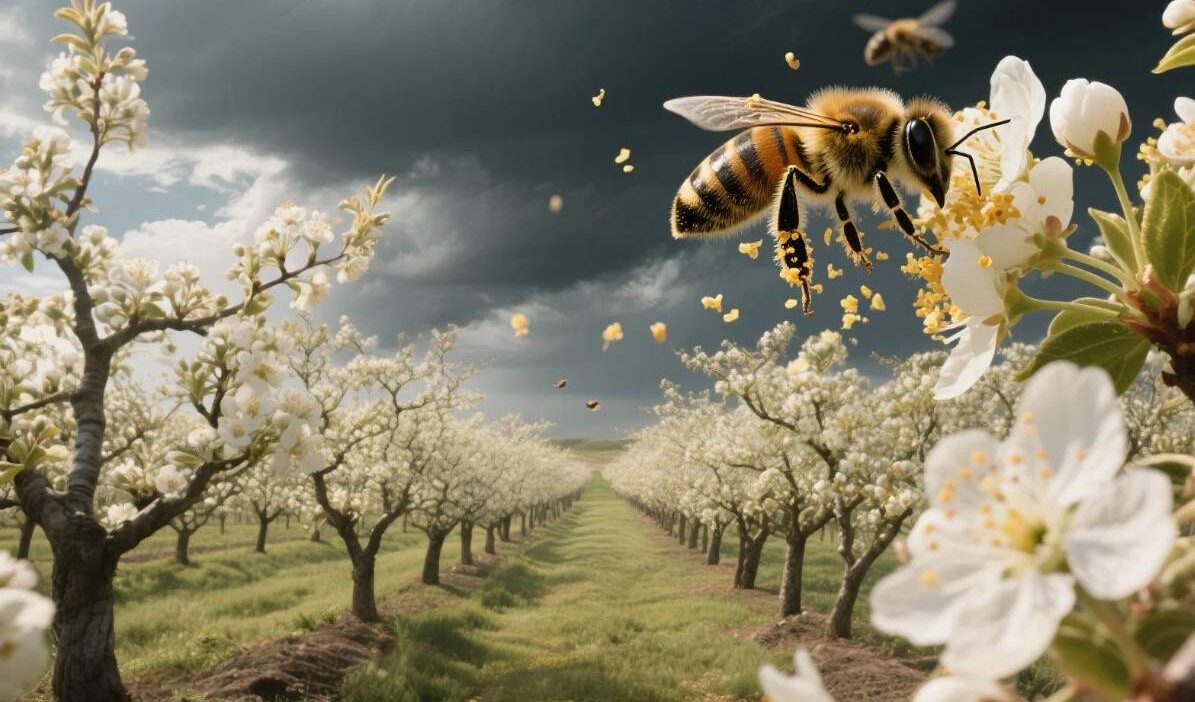The Quiet Crisis: Why Pollinators Matter More Than We Think
Imagine walking through an orchard in spring. The air hums with bees, their fuzzy bodies dusted in pollen as they dart from flower to flower. But this idyllic scene is under siege. Over the past two decades, global pollinator populations—including bees, butterflies, and beetles—have plummeted by 30–50%. A third of the world’s food crops, from apples to almonds, depend on these tiny creatures for reproduction. Without them, our plates would be emptier, our ecosystems unbalanced, and our economies in chaos.
Now, a radical idea is gaining traction: Can synthetic biology revive extinct pollinators? By reconstructing the genomes of vanished species and engineering them to thrive in modern environments, scientists are exploring whether we can turn back the clock on pollinator loss. This isn’t just about saving bees—it’s about redefining our relationship with nature, technology, and the future of food.
The Science of Synthetic Biology: Building Life from the Code Up
Synthetic biology (synbio) is often called “genetic engineering 2.0.” Where traditional genetic engineering tweaks existing organisms, synbio designs and constructs entirely new biological systems—or resurrects extinct ones—using tools like CRISPR gene editing, DNA sequencing, and computational modeling.
For pollinators, this means:
- De-extinction: Reconstructing the genome of an extinct species (e.g., the honeybee subspecies Apis mellifera mellifera, which declined drastically in Europe).
- Enhancement: Engineering living pollinators to resist diseases, pesticides, or climate change.
- Ecological Integration: Ensuring revived species can coexist with modern ecosystems, avoiding unintended consequences.
The process starts with de novo genome assembly: Using DNA fragments from museum specimens, frozen tissues, or even fossilized remains, scientists piece together the species’ genetic code. For example, the genome of the extinct Tasmanian tiger was fully sequenced in 2017 using DNA from a 100-year-old specimen. For pollinators, researchers are turning to similar archives—like the British Museum’s collection of preserved bees—to recover lost genetic material.
Once the genome is reconstructed, synbio tools allow scientists to edit out harmful mutations (e.g., genes linked to disease susceptibility) and insert beneficial traits (e.g., resistance to Varroa destructor mites, a major threat to honeybees). The result? A “revived” pollinator, genetically tailored to survive in today’s fragmented, polluted world.
Case Studies: Reviving the Rusty-Patched Bumblebee
Let’s take the Bombus affinis, or rusty-patched bumblebee. Once common across North America, this species has vanished from 90% of its range since the 1990s, pushed to the brink by habitat loss, pesticides, and a fungal parasite called Nosema. In 2022, a team at the University of California, Davis, announced plans to de-extinct B. affinis using synbio.
Here’s how it would work:
- Genome Recovery: Researchers extracted DNA from museum specimens of B. affinis and cross-referenced it with genomes of closely related species (like the common eastern bumblebee) to fill in gaps.
- Disease Resistance: Using CRISPR, they edited out genes that make bumblebees susceptible to Nosema. They also inserted a gene from a hardier bee species that produces antimicrobial peptides, boosting resistance to parasites.
- Ecological Testing: The revived bees would be released into controlled environments (like restored meadows) to test their ability to forage, reproduce, and interact with native plants.
If successful, this project could not only restore B. affinis but also provide a blueprint for reviving other pollinators, like the endangered Franklin’s bumblebee or the blue orchard bee.
The Promise: More Than Just Saving Species
Reviving extinct pollinators isn’t just an act of ecological nostalgia—it’s a pragmatic response to food security.
Boosting Food Production
Pollinators contribute 577 billion annually to global food production. Reviving even one keystone species could stabilize crop yields. For example, almond production in California relies almost entirely on honeybees; a healthier, more resilient bee population could prevent costly shortages.
Restoring Ecosystems
Pollinators aren’t just “workers”—they’re keystone species that shape entire ecosystems. A single bumblebee species might pollinate 100+ plant species, which in turn support insects, birds, and mammals. Reviving pollinators could help reverse biodiversity loss, creating a “ripple effect” of ecological recovery.
Climate Resilience
Many extinct pollinators were adapted to specific climates. By engineering them to tolerate warmer temperatures or droughts, we could create “climate-smart” pollinators that thrive in a warming world.
The Risks: When Science Meets Ecology
But reviving extinct pollinators isn’t without pitfalls.
Unintended Ecological Consequences
Introducing a revived species into modern ecosystems could disrupt existing balances. For example, if a revived Apis mellifera mellifera (European honeybee) outcompetes native bees for resources, it could harm local biodiversity. As ecologist E.O. Wilson warned, “We must be careful not to replace one problem with another.”
Genetic Contamination
Edited genomes could accidentally introduce harmful traits. For instance, a gene meant to boost disease resistance might mutate and cause unforeseen health issues in the bees—or even jump to wild populations via interbreeding.
Ethical Dilemmas
Is it right to “play god” with nature? Critics argue that de-extinction distracts from protecting existing species. “Why revive a species when we’re still driving others extinct?” asks conservationist Jane Goodall. Supporters counter that synbio is a tool to complement conservation, not replace it.
The Future: A World Where Pollinators Thrive
Synthetic biology is still in its early days, but progress is rapid. In 2023, a startup called BeeRevive announced a partnership with the USDA to test engineered honeybees in Florida, aiming to reduce Varroa mite infestations by 50%. Meanwhile, the European Union has funded a €10 million project to sequence the genomes of 100+ endangered pollinators, laying the groundwork for future de-extinction efforts.
The key to success lies in collaboration. Scientists, policymakers, and Indigenous communities must work together to ensure revived pollinators are ecologically compatible, culturally respected, and ethically managed.
Can We Earn Back Nature’s Trust?
Pollinators are more than insects—they’re symbols of nature’s interconnectedness. Their decline is a warning: Our current relationship with the planet is unsustainable. Synthetic biology offers a chance to rewrite that story, but it’s not a silver bullet.
To truly revive pollinators, we need to pair synbio with habitat restoration, reduced pesticide use, and climate action. As biologist Elinor Ostrom, Nobel laureate in economics, once said, “We can’t solve problems by using the same kind of thinking we used when we created them.”
So, can science save our vanishing pollinators? Maybe. But the real question is: Will we use this power wisely?
Join the conversation at AIDNESS. Should we prioritize de-extinction of pollinators, or focus on protecting existing species? Can synthetic biology coexist with ethical conservation? Share your thoughts—we’re all part of this journey to heal the planet.



